(256) 633-6553
(256) 633-6553
Shop a Dehumidifier that effectively removes excess moisture, creating a healthier environment in your home. Protect your space from mold and mildew with powerful, easy-to-use options. Find the right dehumidifier for any room, available in various sizes and features. Shop now at The Trade Table for the best Dehumidifier to suit your needs.
Below are the five best Dehumidifiers on The Trade Table:
The AlorAir Sentinel SLGR 1400X is a powerful commercial dehumidifier capable of removing 140 pints of water per day at 80°F and 60% humidity, making it ideal for spaces up to 3,800 sq. ft. It uses advanced SLGR (Super Low Grain Refrigerant) technology and a microchannel condenser to maximize energy efficiency and performance. With features like a built-in condensate pump, washable MERV-1 and MERV-10 filters, and automatic on/off functions, this dehumidifier is designed for rugged service with continuous operation. The unit also comes with a five-year warranty and remote control options for added convenience.
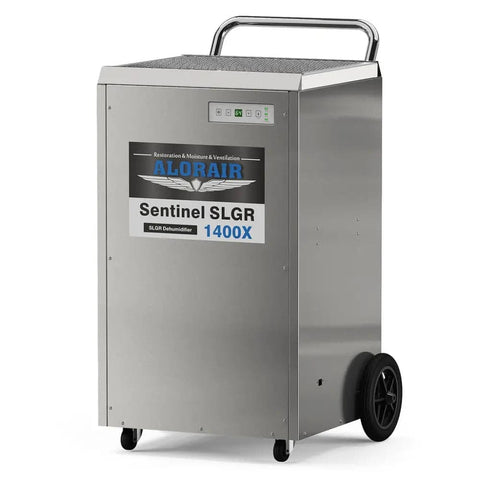
The AlorAir Storm SLGR 1600X is a heavy-duty commercial dehumidifier designed for flood restoration and large damp environments. It efficiently removes up to 160 pints of water per day using SLGR Microchannel technology, providing superior performance in both high humidity and low temperature conditions. With features like a built-in condensate pump, durable epoxy coating for corrosion resistance, and automatic restart functionality, this unit is ideal for demanding restoration jobs and covers up to 4,000 sq. ft.
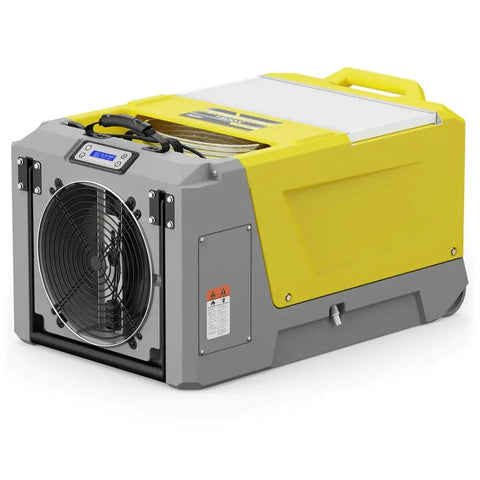
The AlorAir Storm SLGR 1250X is a highly efficient dehumidifier designed for commercial and industrial use, capable of removing 125 pints per day at AHAM conditions and up to 275 pints per day at saturation. It comes equipped with WiFi control via the AlorAir DryEasy app, allowing users to monitor the dehumidification process remotely. With its robust design, it features a built-in pump, a foldable handle, large wheels for easy transport, and onboard storage for the power cord and condensate hose. The unit is suitable for areas up to 3,000 sq. ft., making it ideal for restoration, water damage, and humidity control.
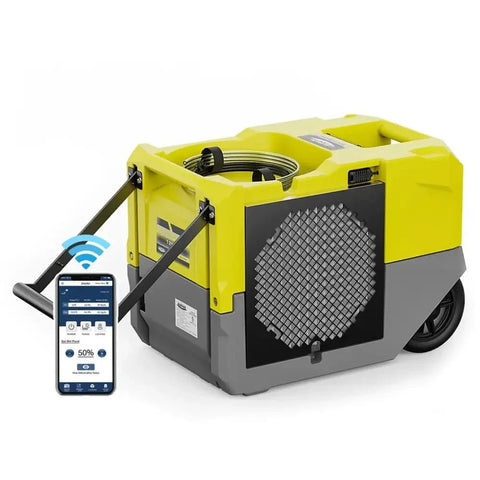
The Perfect Aire 50-Pint ENERGY STAR Dehumidifier with Built-In Pump is an efficient solution for reducing humidity in spaces up to 4,500 square feet. With a 50-pint capacity, it can tackle excessive moisture to create a more comfortable living environment. The built-in pump allows for continuous vertical drainage up to 16 feet, eliminating the need to empty the bucket manually. You can adjust the humidity levels easily using the soft-touch control pad, and the unit’s washable filter makes maintenance hassle-free. It's also equipped with eco-friendly R32 refrigerant, contributing to its Energy Star efficiency.
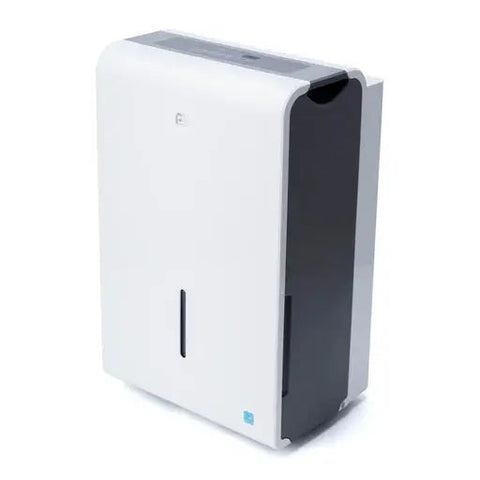
The Perfect Aire 50-Pint ENERGY STAR Dehumidifier with Continuous Drainage is designed to keep large spaces like basements and rooms up to 4,500 square feet dry and comfortable. With a 50-pint water removal capacity, it offers ultra-quiet operation, ideal for year-round humidity control. You can easily adjust the humidity settings with a soft-touch electronic control pad, and the continuous drainage feature allows the unit to run without needing to empty the water bucket manually. The dehumidifier also includes an adjustable humidistat, a reusable air filter, and eco-friendly R32 refrigerant, ensuring efficient and environmentally friendly performance.
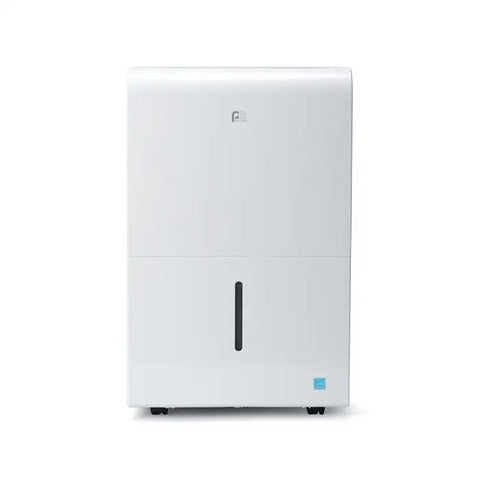
Here are some frequently asked questions about a Dehumidifier:
A dehumidifier removes excess moisture from the air, reducing humidity levels in your home or space. This helps prevent mold, mildew, and allergens from forming. It also improves comfort by making the air feel cooler and less sticky.
A dehumidifier draws moist air in, cools it to condense the moisture, and collects the water in a tank or drains it. The dry air is then reheated and released back into the room. This process keeps humidity levels balanced in the space.
A dehumidifier is a device that reduces humidity by extracting moisture from the air. It helps to maintain comfortable living conditions and prevents problems like mold, mildew, and condensation. Dehumidifiers are commonly used in homes, basements, and other damp environments.
The size of the dehumidifier depends on the room size and moisture levels. For small rooms, a 30-pint unit may suffice, while larger spaces or basements might need a 50-pint or even larger. Always check the square footage rating on the dehumidifier for guidance.
A dehumidifier is used to control humidity levels in homes, basements, or spaces prone to dampness. It prevents mold, mildew, and allergens from growing. It also improves air quality and reduces condensation.
To clean a dehumidifier, unplug it and remove the water tank. Clean the tank with soap and water, and wipe down the filter and coils if accessible. Make sure everything is dry before reassembling the unit.
Place the dehumidifier in a damp area, set your desired humidity level (usually between 30-50%), and let it run. Make sure to empty the water tank regularly unless it's connected to a drain. For optimal performance, ensure proper airflow around the unit.
For basements, a 50- or 70-pint dehumidifier is typically recommended, depending on the size and dampness level. Larger basements or particularly humid areas may need more capacity. Check the manufacturer’s specifications to match the space.
For comfortable indoor humidity, set your dehumidifier to around 30-50% relative humidity. This range prevents mold and mildew while keeping the air comfortable. You may adjust it depending on seasonal humidity changes.
A dehumidifier improves air quality by reducing allergens like dust mites and mold. Lower humidity levels can reduce respiratory issues and skin irritation. It also helps asthma and allergy sufferers breathe easier.
Use a dehumidifier when indoor humidity levels exceed 50%, or when you notice signs of excess moisture like condensation on windows or musty smells. It’s especially useful in the summer and during rainy seasons. Basements and bathrooms often need dehumidification year-round.
The size depends on the space's square footage and the moisture level. For moderately damp spaces, a 30-50 pint dehumidifier works for areas up to 1,500 square feet, while wetter spaces or larger rooms may need a 70-pint model or bigger. Use a dehumidifier sizing chart for accuracy.
If your dehumidifier isn't collecting water, check the humidity level, as it may already be low. The air filter could also be clogged, or the coils might need cleaning. Make sure the room temperature is above 65°F, as some units don’t work well in cooler temperatures.
Remove the filter from the dehumidifier and wash it under warm water with mild soap. Let it dry completely before putting it back. Regularly cleaning the filter helps maintain efficient operation.
Dehumidifiers typically use between 300 and 700 watts, depending on the size and model. Running it for long hours will impact your energy bill, but modern Energy Star-rated models are more efficient. It's best to check the wattage in the unit's manual for precise usage.
Dehumidifiers can ice up if the room temperature is too low, typically below 65°F. The coils can freeze when they get too cold, preventing moisture collection. Try moving the unit to a warmer area or using a dehumidifier with a defrost feature.
Dehumidifiers are useful year-round, but are more often used in summer when humidity levels are higher. In winter, a dehumidifier can still be used in damp areas like basements. However, heating your home might reduce the need for it.
A well-maintained dehumidifier typically lasts around 5 to 10 years. Regular cleaning and proper storage help prolong its lifespan. Make sure to clean the filter and empty the water tank regularly.
To keep your basement dry without a dehumidifier, improve ventilation by opening windows or using fans. You can also install exhaust fans or waterproof the basement walls to prevent moisture buildup. Check for and fix any leaks that could contribute to dampness.
Running a dehumidifier costs around $0.03 to $0.16 per hour, depending on the unit's wattage and your electricity rates. For 8 hours a day, expect a monthly cost between $10 and $50. Energy-efficient models help lower running costs.
A dehumidifier should run for 10 to 12 hours a day in humid conditions. However, it can automatically turn off when the target humidity level is reached. You can adjust the run time based on the dampness of the space.
Dehumidifiers blow warm air because the process of removing moisture from the air generates heat. This is normal as the air passes through heated coils before being returned to the room. The warmth also helps lower humidity levels.
Unplug the dehumidifier, remove the cover, and use a soft brush or cloth to clean the coils. You can also use a coil cleaner spray for a more thorough clean. Make sure the coils are dry before reassembling the unit.
Dehumidifiers use about 300 to 700 watts, depending on the model and size. Energy-efficient models will use less power. Check the unit’s manual for specific power consumption details.
To reduce humidity without a dehumidifier, improve ventilation by opening windows or using fans. You can also use moisture-absorbing materials like silica gel or rock salt in damp areas. Reducing indoor plants and drying clothes outside helps too.
Most dehumidifiers use between 300 to 700 watts per hour, depending on the unit’s capacity. Running time, room size, and humidity levels affect power usage. Look for energy-efficient models to reduce electricity consumption.
Place the dehumidifier in the most humid part of the room, usually near the center for better airflow. Make sure there’s a few feet of space around the unit for ventilation. Avoid placing it near walls or furniture that could block the airflow.
Your dehumidifier might be freezing up because the room temperature is too low, or there is restricted airflow around the coils. Units typically freeze in temperatures below 65°F. Clean the air filter and coils, and try moving the dehumidifier to a warmer area.
Dehumidifiers must be disposed of at a recycling facility or hazardous waste center because they contain refrigerants. Check your local regulations for proper disposal. Many municipalities offer pick-up services for large appliances.
A dehumidifier typically uses 300 to 700 watts, depending on the model and size. The higher the capacity of the dehumidifier, the more power it will use. Energy-efficient models can help reduce the total wattage consumed.
Your dehumidifier might be leaking due to a clogged drain hose or a full water tank. Check that the hose is properly connected and the tank is emptied regularly. If the issue persists, there could be a crack in the tank or a faulty pump.
To reset a dehumidifier, unplug the unit for about 10 minutes. Plug it back in and press the reset button, if available, or simply power it on. Refer to the user manual for model-specific reset instructions.
You can buy a Dehumidifier at The Trade Table.
When it comes to managing indoor air quality, both dehumidifiers and humidifiers play a vital role, but they serve opposite functions. Choosing between a dehumidifier and a humidifier depends on the environment and specific air quality needs. Below is a breakdown of each.
A dehumidifier removes excess moisture from the air, helping to reduce humidity levels in areas prone to dampness, such as basements or humid climates. It is essential for preventing mold, mildew, and dust mites that thrive in moist conditions.
A humidifier adds moisture to the air, increasing humidity levels in dry environments. It's ideal for homes during winter months or in dry climates to help prevent dry skin, respiratory issues, and static electricity.
Features: 1. SLGR Microchannel Technology 2. Convenient storage for cable and drain tube 3. Condensate pump ...
View full details
